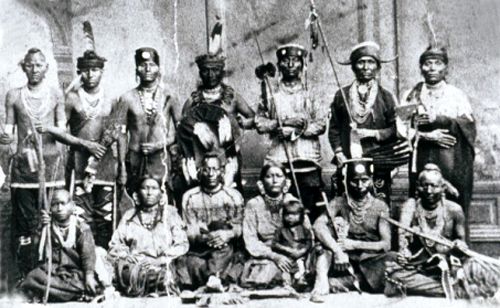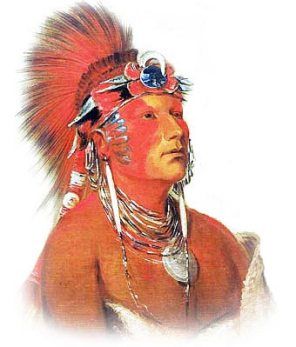
>
Echoes in the Wind: America’s Enduring Tapestry of Legends
America, a nation forged from vast landscapes and diverse peoples, is not merely a collection of historical facts and dates. It is a land deeply steeped in a rich, evolving tapestry of legends. From the ancient oral traditions of its Indigenous inhabitants, whispered across generations, to the tall tales born on the frontier and the eerie urban myths of today, these stories are more than mere folklore. They are the collective memory, the whispered fears, the soaring aspirations, and the very soul of a continent. Like the shifting currents of the Mississippi or the enduring peaks of the Rockies, America’s legends sculpt its identity, reflecting its struggles, its triumphs, and its endless quest for meaning.
These narratives are not static relics of a bygone era; they are living entities that adapt, grow, and continue to shape our understanding of who we are and where we come from. They provide a vital link to the past, grounding us in the struggles and wisdom of those who came before, while simultaneously offering a lens through which to interpret the present and imagine the future.

The Deep Roots: Indigenous Voices and the Kanza People
Long before European sails touched these shores, the land teemed with stories. Indigenous peoples, with their profound connection to the earth, wove intricate narratives that explained creation, the natural world, and humanity’s place within it. These were not just tales; they were blueprints for living, moral compasses, and spiritual guides. Each tribe held its own sacred lore, passed down through generations, often through elaborate oral traditions, ceremonies, and art.
Among the many nations whose stories predate recorded history are the Kanza, or Kaw people. Known as the "People of the South Wind," their ancestral lands stretched across what is now Kansas and parts of Missouri. For centuries, the Kanza lived in harmony with the vast prairie, their lives intimately intertwined with the buffalo, the Kaw River (which bears their name), and the endless expanse of sky. Their legends, like those of many Plains tribes, spoke of the sacredness of the land, the interconnectedness of all living things, and the powerful spirits that inhabited the natural world.
"Our stories are the breath of our ancestors, carrying their wisdom through time," once remarked a Kanza elder, emphasizing the living nature of their traditions. These narratives often featured animal helpers, trickster figures like Coyote or Iktomi, and powerful spirits of the earth, water, and sky. They taught lessons of respect, community, perseverance, and the cyclical nature of life and death. The buffalo, for instance, was not just a source of food and shelter but a sacred relative, a symbol of abundance and resilience, whose spirit was deeply revered in their ceremonies and stories.
The Kanza’s journey through history is one of profound resilience. Despite forced removals, the devastating impact of disease, and the systematic attempts to erase their culture, the Kaw Nation, now primarily based in Oklahoma, has fought to preserve its language, ceremonies, and, crucially, its stories. These legends are not just historical artifacts; they are vital components of their identity, a testament to their enduring spirit, and a source of strength for future generations. The fact that a prominent figure like Charles Curtis, Vice President of the United States under Herbert Hoover, held Kanza heritage underscores the deep roots and quiet influence of these Indigenous narratives in the broader American story. The Kanza’s legends serve as a poignant reminder that America’s oldest stories are deeply embedded in the very soil beneath our feet, waiting to be heard and understood.
From Old World Shores: Colonial Fears and Fantasies
As European settlers arrived, they brought their own legends and superstitions, which soon mingled with the mysteries of the new continent. The vast, untamed wilderness sparked both wonder and profound fear, giving rise to tales that reflected the anxieties and aspirations of a fledgling nation.
Washington Irving, one of America’s first literary giants, masterfully captured this blend in his iconic tales. "The Legend of Sleepy Hollow," with its headless Hessian horseman haunting the quiet valleys of the Hudson, speaks to the lingering fears of the supernatural and the unsettling presence of history in a new land. Ichabod Crane’s terrifying encounter is a classic American ghost story, one that has transcended generations and continues to be retold, embodying the primal fear of the unknown that lurked just beyond the edges of colonial settlements.

Similarly, "Rip Van Winkle" delves into themes of change, time, and the transition from British rule to American independence, all wrapped in a fantastical encounter with mysterious, ancient Dutchmen in the Catskill Mountains. These early American legends, while rooted in European storytelling traditions, became uniquely American through their settings and their reflection of the nascent nation’s psychological landscape.
Forging a Nation: Frontier Heroes and Industrial Giants
As the young United States expanded westward, pushing into the vast, uncharted territories, a new genre of legends emerged: the tall tale. These were stories born of the frontier’s harsh realities, where courage, strength, and ingenuity were paramount. They served to celebrate the larger-than-life figures who tamed the wilderness, shaped the land, and embodied the American spirit of individualism and boundless possibility.
Paul Bunyan, the colossal logger and his blue ox, Babe, are perhaps the quintessential example. With a swing of his axe, Paul Bunyan supposedly carved out the Great Lakes, dug the Grand Canyon, and created entire mountain ranges. These exaggerated tales, often shared around campfires, helped make sense of the immense scale of the American landscape and the Herculean efforts required to settle it. Bunyan became a symbol of American strength, industry, and the power of human will to conquer nature.
Then there was Johnny Appleseed (John Chapman), a real historical figure whose benevolent deeds were amplified into legend. He wasn’t just a man who planted apple trees; he was a gentle wanderer, a spiritual pioneer who brought civilization and sustenance to the frontier, embodying a quieter, nurturing aspect of westward expansion.
As the nation industrialized, new heroes emerged. John Henry, the "steel-driving man," became a legendary figure of the working class. His epic contest against a steam-powered drill, where he famously declared, "A man ain’t nothing but a man, but before I let that steam drill beat me down, I’ll die with a hammer in my hand," captures the tension between human labor and the rise of machinery. John Henry’s sacrifice, dying with his hammer in hand, became a powerful testament to human dignity, endurance, and the cost of progress. These legends, whether about taming the land or battling the machine, spoke to the heart of a nation defining itself through its labor and its heroes.
Modern Mysteries: Shadows and Skepticism
Even in the hyper-connected, scientifically advanced 21st century, America’s appetite for legends remains insatiable. Modern legends often tap into contemporary anxieties, technological fears, and a lingering desire for the inexplicable. Bigfoot, the elusive ape-like creature said to roam the Pacific Northwest, continues to fascinate, embodying the wild, untamed corners of a seemingly domesticated continent. UFO sightings, particularly around places like Roswell, New Mexico, feed into narratives of government cover-ups and extraterrestrial visitation, reflecting a deep-seated distrust of authority and a yearning for cosmic answers.
Urban legends, shared rapidly across the internet, range from the terrifying (Slender Man, the Hookman) to the bizarre (alligators in sewers). These stories, often localized and quickly evolving, serve as modern morality tales, warning against stranger danger, the perils of technology, or simply providing a thrilling scare. They demonstrate that the human need for storytelling, for explaining the unexplainable, and for sharing collective fears and wonders, is as potent as ever.
The Unending Narrative
America’s legends, from the ancient Kanza winds whispering across the prairie to the digital echoes of modern myths, form an enduring and ever-expanding narrative. They are not merely quaint stories for children or academic curiosities; they are living artifacts that reflect the diverse origins, the historical struggles, and the enduring spirit of a nation.
They teach us about our connection to the land, the courage of our ancestors, the challenges of progress, and the persistent human quest for meaning in a world both wondrous and terrifying. As new generations emerge and new challenges arise, America’s legends will continue to adapt, providing comfort, inspiration, and a vital link to the shared human experience. In every campfire tale, every whispered warning, and every heroic saga, the pulse of America beats on, a testament to the power of story to define, unite, and endure.


